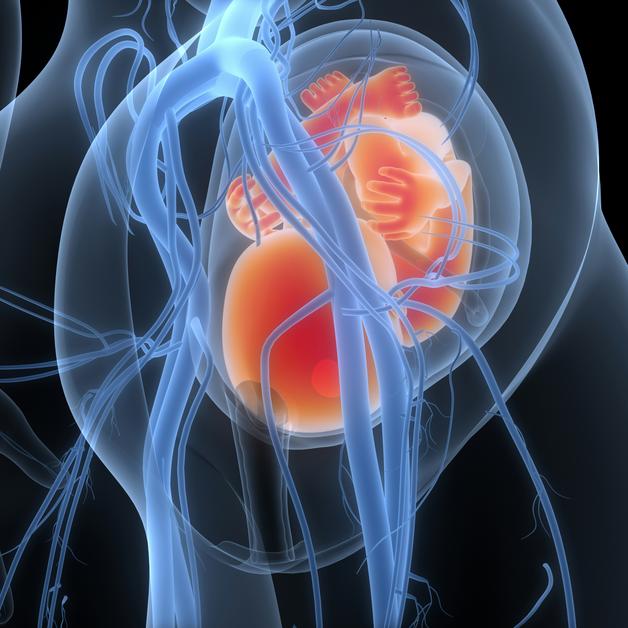Amid fluttering anticipation and a touch of apprehension, questions swirl—can birth truly be experienced gently, with respect for the body’s own wisdom? Many parents wonder if enduring labour “naturally” is an ordeal to be survived or a path to empowerment. Natural childbirth draws much attention here: some view it as a harmonious journey, others see it as daunting. But is it only about enduring pain, or is something deeper at stake? Let’s shine a light on your choices, exploring what natural childbirth actually means, the real benefits and challenges, and how preparation—mental, physical, emotional—makes all the difference. Flexibility, practical tips, scientific insights: the road ahead is as unique as every childbirth itself.
What Natural Childbirth Means: Philosophies, Practices, and Myths
Defining Natural Childbirth—More Than “No Medicines”
Natural childbirth isn’t just about “saying no to injections” or braving pain. It’s a philosophy: respecting your body’s inherent ability to bring forth new life, with minimal reliance on medical interventions. Think of it as trusting nature, but never shutting the door on medical support. For a moment, picture a space where you move, change positions, breathe deeply, and make choices about your own comfort measures, whether that’s relaxing music, a warm bath, or soothing back massage. Techniques such as dedicated prenatal breathing exercises, gentle movement, hydrotherapy (using water for relaxation), massage, acupressure, and focused mental preparation become your toolkit.
Many start with childbirth education classes, like Lamaze or the Bradley method, hypnobirthing, or even prenatal yoga—where the aim is building confidence, knowledge, and a sense of control. Importantly, the presence of a birth partner or doula—someone skilled in giving emotional and physical support—makes a world of difference. Far from being an extreme choice, natural childbirth is about constructive readiness. If, at any time, a switch becomes necessary—medical help remains available. That’s the hallmark of genuine empowerment: choice.
Debunking Popular Myths
Parents may hear all sorts of stories: that natural childbirth is only for the “brave” or that it forbids all medical comfort. In truth, most women use a blend of techniques—a good birth team keeps both non-pharmacological and pharmacological options open. It’s not about who is “strongest.” It’s about what works for you, with respect given to your body’s signals and the circumstances that unfold.
Key Benefits of Natural Childbirth for Mothers and Babies
Strength for Mothers: Fast Recovery, Empowered Experience
- Shorter recovery: Without anaesthetic drugs or surgical interventions, most mothers can walk, stand, and begin early feeding sooner. Pelvic sensation remains intact, so the urge to push is clearer and easier to follow.
- Reduced complications: Lower rates of instrumental assistance (like forceps or vacuum), less risk of episiotomy (a surgical cut near the birth canal), and fewer issues tied to fever or lengthy labours are commonly recorded in scientific studies.
- Active bonding: Hormonal surges—especially oxytocin—work best when not interrupted by medications. Early mother-infant contact accelerates emotional connection and stimulates milk production.
- Confidence and agency: Facing the challenge in your own way (whether in a cozy home, a calm birthing center, or a hospital’s natural-birth suite) often leaves new mothers feeling deeply accomplished and resilient.
Well-being for Babies: Gentle Beginnings, Strong Attachment
- Immediate skin-to-skin: Babies, usually more alert at birth without sedative medicines, can snuggle directly on their mother’s chest—regulating breathing, temperature, and heart rate. This close contact encourages early breastfeeding, which has direct benefits for immunity and neurodevelopment.
- Calmer transition: Reduced intervention means a lower risk of breathing difficulties or feeding challenges in those precious first hours.
- Long-term health: Some research hints at fewer issues with gut flora and a fortified immune system—although this is still under scientific discussion.
Pain, Perception, and Practical Coping
You may be wondering: what is labour pain, really? Isn’t it too much to bear without medicines? Labour pain comes from strong, rhythmic muscle contractions of the uterus, along with pressure on nerves and tissues. However, unlike an illness or accident, this pain is cyclical—building with contractions, easing in between, and often described by mothers as purposeful.
- Expectation shapes experience: Evidence shows mental preparation—breathing, mindfulness, explanation of what to expect—reduces pain perception and lessens anxiety.
- Support matters: A caring team—midwife, doula, birth partner—can suggest position changes, counterpressure, supportive words, and touch at exactly the right moment.
- Flexibility stays essential: If pain breaks all previous limits, don’t hesitate to discuss comfort options; an epidural or pain relief remains a possibility unless birth is imminent.
Preparing for Natural Childbirth: Knowledge, Body, and Mind
Learning and Understanding: The Education Pillar
Attending thorough preparation classes (in groups or online), hearing others’ positive birth stories, reading trusted books—all these build a bank of practical know-how. Understanding how contractions work, what positions ease discomfort, and which techniques work for pain transforms uncertainty into confidence.
Physical Readiness: Training for an Endurance Event
- Prenatal exercise: Pelvic tilts, gentle stretching, walking, and targeted yoga routines keep joints supple and muscles strong.
- Breathing drills: Deep abdominal breaths help during contractions; practiced regularly, they become second nature.
- Perineal massage: Massaging the area between vagina and anus a few weeks before due date can gently stretch tissues, making them more resilient (scientifically shown to lower tearing rates).
- Diet and hydration: Nutritious meals and plenty of fluids prepare the muscles for strenuous work.
Mental and Emotional Backing: From Fear to Trust
- Visualization, affirmation, and relaxation: Techniques from hypnobirthing or meditation anchor the mind, turning doubts into focus.
- Peer sharing: Listening to others demystifies the process, replaces fear with hope, and helps manage diverse reactions—tears, laughter, frustration—during labour.
Creating a Birth Plan—Your Voice, Your Choices
A written list of preferences—pain management, birthing positions, who you want present, how to handle unexpected scenarios—opens honest conversations with doctors and midwives. Flexibility is the heart here: a plan is a compass, not a contract.
Birth Environment: Home, Center, or Hospital?
- Home birth: Familiar surroundings, freedom of movement, personalized rituals; safest for low-risk pregnancies under the guidance of an experienced midwife and with a clear transfer arrangement.
- Birth center: Calm, supportive, family-focused spaces that provide non-clinical care with quick hospital access if needed.
- Hospital-based natural birth: Modern hospitals may offer “natural birth suites”—dim lighting, birthing balls, intermittent monitoring—and respect for your plan, with immediate medical help nearby.
Pain Management—Natural Tools and Science
- Controlled breathing: Slows heart rate, carries more oxygen to both mother and child, dampens stress.
- Movement and positioning: Upright poses, walking, squatting—these use gravity, reduce pressure, and promote efficient descent.
- Hydrotherapy: Warm baths relieve tight muscles, lessen perception of pain, and boost endorphin release.
- Massage and touch: Gentle back rubs, counterpressure points (like acupressure on the lower back), and heat packs are proven in studies to ease discomfort.
- Music, lighting, aromatherapy: Soothing scents (lavender, chamomile), soft tunes, and low lights help mothers retreat into a “bubble of comfort.”
Trusted Support—The Circle Around You
Your emotional environment can tip the scales. Partners provide encouragement, sometimes even just holding hands or wiping a brow at just the right moment. Midwives and doulas suggest new positions, keep a reassuring presence, and act as advocates—never judgmental, always listening. Healthcare professionals monitor the well-being of both mother and baby and adjust their approach if risks increase.
Open conversation, gentle advocacy, and shared decision making spark trust on all sides. That collaboration keeps your needs at the center, even as events evolve.
Labour Stages: Each Phase, Each Strategy
- Early labour: Mild contractions—ideal for restful activity, snacks, hydration, gentle walks, music, baths.
- Active labour and transition: Stronger waves—position changes, focused breaths, massage, and verbal support become vital.
- Pushing and delivery: The final stretch—upright positions often work well, guided (but not forced) pushing helps protect tissues, continuous encouragement is invaluable.
- Golden hour: The first uninterrupted hour—direct skin-to-skin and relaxed feeding solidify the mother-infant bond, elevate oxytocin, and smooth emotional adjustment.
Adaptability—The Hidden Power
Birth rarely follows a predictable pattern. Sometimes the best-laid plans shift quickly: perhaps pain intensifies, energy drops, or a complication arises. When adjustments are necessary—whether that means an epidural or an urgent intervention—flexibility becomes a sign of wisdom, not failure. Early discussion with an anesthesiologist offers peace of mind about your “windows” for pain relief options. True calm comes from being prepared for surprises, not hoping they’ll never arise.
Stepping Into Recovery—Body and Bonding
Physical Recovery
Expect vaginal bleeding (lochia), perineal soreness, and a gradual return to pre-pregnancy comfort. Cool compresses, easy pelvic floor exercises, gentle walking, and attentive hygiene support healing. Regular medical check-ups catch early issues and reassure you that recovery is progressing normally.
Emotional Wellness
Skin-to-skin and early feeding nurture not only the baby’s brain but also the mother’s heart. Emotional shifts—a mix of joy, tears, exhaustion—are normal. Family, partners, doulas, and community resources make a huge difference. Don’t let persistent sadness or anxiety linger without seeking help; compassionate support is part of healthy parenthood.
Myths, Misunderstandings, and Authentic Narratives
True natural childbirth is neither reckless nor about stoic endurance. Parents, after positive birth experiences, often say they “discovered an inner strength”—and recommend practical tips like practicing breathing, staying flexible, and inviting comforting elements into the birth setting. Each story is equally valid, whether plans change or not; the journey is what builds resilience.
Key Takeaways
- Natural childbirth is a philosophy celebrating the body’s innate strength, backed by careful preparation, open options, and personalized support.
- Techniques—controlled breathing, movement, hydrotherapy, informed support—make pain manageable and reduce the need for intervention.
- Medical science reveals multiple benefits: quicker recovery, fewer complications, and improved mother-infant bonding.
- Flexibility is the real “secret ingredient,” turning the unknowns of birth into a positive and empowering story.
- Every parent has the right to carve their own birthing path; there are plenty of resources available, and professionals are ready to walk with you.
- For personalised guidance and free health checklists for your child, download the Heloa application.
Questions Parents Ask
What are the disadvantages of natural childbirth?
Natural childbirth promises a unique sense of agency and can speed up recovery—yet, for many, the lack of pain medications can amplify the challenge, especially if labour is long or new difficulties arise unexpectedly. Sometimes urgent interventions or transfers become necessary, which can be stressful if you expect a predictable course. Preparation is key: skilled support, information, and being open to adapting your plan helps parents respond rationally and safely—your choices always remain open.
Where can I find support and information about natural childbirth techniques?
Seeking reassurance and practical advice is both reasonable and wise. Many parents benefit from childbirth education sessions, now readily available at hospitals, birthing centers, or online platforms. These programs cover all key practical skills—relaxation, breathing, effective movement, and real-world advice. Parent communities, either local or online, give space to share personal experiences and seek peer support. Trustworthy books, official websites, and—most importantly—the direct guidance of experienced midwives or doulas enrich your journey and bolster confidence. Never hesitate to bring up your concerns with your medical team; whatever your path, their expertise stands ready to guide you.









